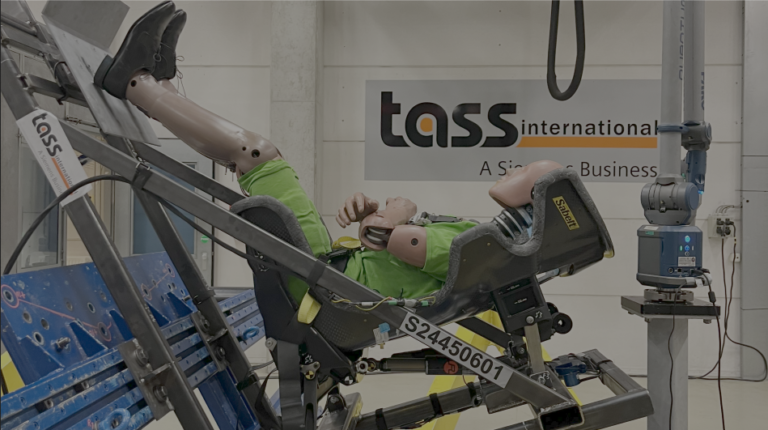The FIA has highlighted that the 2025 World Rally-Raid Championship features a significant leap forward in crew safety, following the first implementation of the first seat attenuator in the Dacia Sandriders. Developed in accordance with new FIA safety regulations, the attenuators will become mandatory from 2027 in all T1+ class vehicles.
The new seat regulation, developed by the FIA with funding support from the FIA Foundation, is designed to protect drivers and co-drivers from spinal compression injuries that may be caused by a heavy landing from a jump. This is achieved by suspending the seats inside the car with a specialized damper that absorbs the energy from an impact.
Using real-world data from incidents involving a heavy landing, which are recorded in the FIA’s World Accident Database, experts defined a representative ‘severe crash pulse’ as a target for the project to mitigate against – a 40g peak crash pulse orientated at an angle of 58° from the horizontal axis.
This crash pulse was then used in simulations to define the best force displacement characteristics for the seats installed in the competition cars, so that a dampening mechanism could then be developed and connected to the seats. Paolo Panichelli, an FIA senior research engineer and CAE manager, explained, “The success of this project has been fundamentally supported by the use of numerical simulation with virtual test dummies, to define the optimal characteristics of the attenuation system. It is a perfect example of how utilizing this tool allows for the development of a specific product without the need for extensive experimental campaigns.”
Following refinement through simulations, an optimal design for the impact dampener was manufactured and underwent laboratory testing that confirmed benefits of around a 50% reduction in the forces transferred from the car to the occupants during this kind of impact.
In the next step in the project, the FIA supported Prodrive in the development of a suspended seat connected to the roll cage via the specified damper, which was first implemented on the 2024 Rallye du Maroc. Data monitoring throughout the real-world testing phase found the device to be operating as expected and delivering significant safety benefits.
Marco Petrilli, the FIA’s head of research and vehicle safety, concluded, “This has been a really fantastic project to bring to the W2RC. We are driven by the data, and we identified this as an area where we could bring some significant benefits for the crews. Using the FIA World Accident Database we could define what a typical ‘high-impact’ landing that can cause a spinal injury looks like, and use that information to set our targets for the seat attenuator, and then set requirements for a device according to our extensive simulations. It’s a great example of how the FIA is always working to improve safety.”



